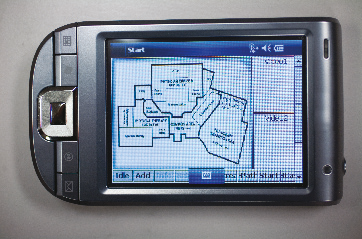When Liang Cheng, assistant professor of computer science and engineering, imagines the future, he envisions wireless sensor networks deployed in a growing number of places and ways to give intelligence to the high-tech systems that make modern life happen.
Suppose there’s a major pileup on I-78 in Allentown, Pa. Cheng and his Laboratory Of Networking Group (LONGLAB) colleagues are studying ways of wirelessly linking car accelerometers, the devices that measure acceleration forces. The resulting wireless sensor network would enable a lead car to “observe” the event and transmit information to cars from Harrisburg to Newark, N.J.
But the fl ow of crucial information can be disrupted, says Cheng, preventing wireless sensor networks from achieving an instantaneous end-to-end path between information sources and destinations. Cheng is working with two other professors in his department, Mooi Choo Chuah and Brian Davison, to create an adaptive system for DARPA that maintains the integrity of large-scale wireless sensor networks in challenging environments. This kind of system was used when many sensors in the World Trade Center were destroyed by heat in the 2001 terrorist attack; robots guided by undamaged sensors were then deployed to search for humans.
Cheng’s group also has an NSF contract to develop “middleware,” a type of software that uses a variety of operating systems to enable realtime communication among sensors, handheld devices and desktop systems. In a chemical factory fi re, middleware would enable a fire-fighter with a handheld device to determine whether the air in the room he’s about to enter is contaminated. The same device could also guide him safely out of the building.
Cheng’s group is collaborating with Lehigh civil engineering professors to embed sensing systems in bridges and subsurface structures to monitor their responses to earthquakes. They have also developed embedded system and wireless network applications for LSI Corp.
“As sensors get smaller and smarter, I can see them being connected and deployed increasingly in a variety of ways,” says Cheng. “We may soon see them in our clothes, shoes, appliances and gadgets, which will enable invisible computing in a ubiquitous way.”

